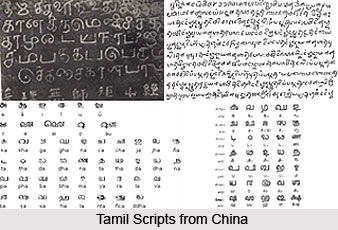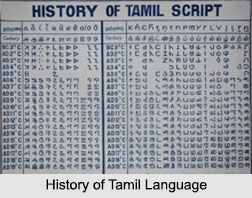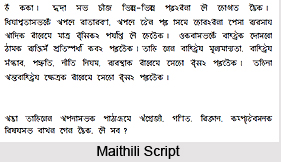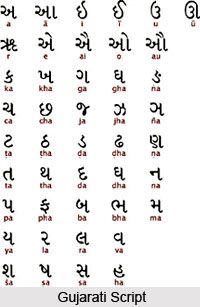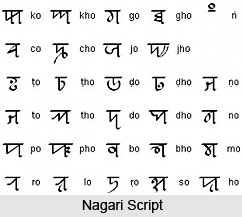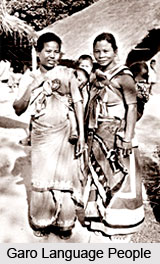 Tibeto-Burman language family in India is roughly counted under the insignificant bunch, accounting for not more than minority cluster of speakers and concentrated within a specified region. This particular Indian language family is yet to receive its booming appreciation, the lack of which can be attributed to its rather unpopularity and inertness. The languages include: Meitei language, Bodo language, Naga language and Garo language.
Tibeto-Burman language family in India is roughly counted under the insignificant bunch, accounting for not more than minority cluster of speakers and concentrated within a specified region. This particular Indian language family is yet to receive its booming appreciation, the lack of which can be attributed to its rather unpopularity and inertness. The languages include: Meitei language, Bodo language, Naga language and Garo language.
Meitei language
Meitei language, considered essential under the Tibeto-Burman Indian language family, is also named as Meitei-lon, Meitei-lol and Manipuri. Sometimes, the 19th century British term, Meithei, implying the name of the people, not of the language, is the predominant language and lingua franca in the southeastern Himalayan state of Manipur in north-eastern India. Meitei is esteemed as the official language in government offices. Meitei-lon is also spoken in the Indian states of Assam and Tripura. Meitei-lon has established itself as a large amalgamating language amongst all ethnic groups in Manipur, who employ it to converse among themselves.
Meitei-lon has been discerned, as "Manipuri" by the Indian Union and has been incorporated within the list of scheduled languages (included in the 8th schedule by the 71st amendment of the Constitution in 1992). Meitei-lon is taken up as a subject up to the post-graduate level (Ph.D.) in Universities of India, besides being a prevailing medium of teaching up to the undergraduate level in Manipur. Although Meitei-lon is also referred to as Manipuri, it is not one and the same with the Indo-Aryan language known as Bishnupriya Manipuri, also currently spoken in the state of Manipur.
Bodo language
Bodo is a Tibeto-Burman language incorporated within several groups in Indian language families, spoken by the Bodo people of north-eastern India. The language is one of the official languages of the Indian state of Assam. Bodo also serves as one of 22 scheduled languages, lent a special constitutional status in India. Bodo language, a subdivision of the Sino-Tibetan family of language, is enriched inherently. It is regarded a substantial language of the Bodo group under the Assam-Burmese group of language. It shares some regular features with respect to vocabulary, phonology, morphology and syntax with other sister languages of the Bodo group. The language also bears close links with the Dimasa language of Assam and the Garo language of Meghalaya. Bodo is further regarded as a closely related language of Kokborok language spoken in Tripura. The dialects within Bodo language under Tibeto-Burman language family in India include: Chote, closely associated with Dimasa, Tripuri, Lalunga.
Bodo language is officially scripted employing the Devanagari script, although it also has a prolonged history of utilising the Roman script. Some researchers also are of the view that the language originally made use of a now-lost script called Deodhai.
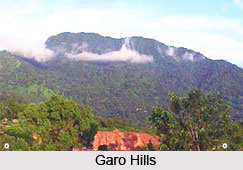 Naga Language
Naga Language
Naga language is also acknowledged as Kuki-Chin-Naga languages, forming a sub-group of the Tibeto-Burman family, minority community within Indian language families. They are predominantly spoken by the Naga people of Nagaland. The larger among these languages possess communities of several ten thousands of aboriginal speakers and a few possess more than 100,000, like Mizo (540,000), Thado (150,000) or Ao (140,000).
Garo language
Garo language is also spelled as Garrow, or else acknowledged by the people`s own name for themselves, Mande. Garo is the language of the majority of the populace of the Garo Hills in the Indian state of Meghalaya. Belonging to the Tibeto-Burman language family within Indian language families, Garo is also spoken in Kamrup, Dhubri, Goalpara and the Darrang districts of Assam. Garo language utilises the Latin alphabet and bears a close resemblance to Bodo, the language of one of the dominant communities of the neighbouring state of Assam.
The dialects in Garo language assimilate: A`beng (A`bengya, Am`beng), A`chick (A`chik), A`we, Chisak, Dacca, Ganching, Kamrup and Matchi. The Achik dialect rules amongst several intrinsically apprehensible dialects. Garo speakers total approximately to 575,000 in India (as of 1997).
The Department of Garo, the only one of its kind in the world, was instituted by popular demand in 1996, after the inauguration of North Eastern Hill University. The Department recorded in audio and videotapes parts of A`chick (Garo) epic poetry of "Katta Agana", the legend of "Dikki & Bandi", assorted folktales, folksongs and time-honoured oral poetry.
